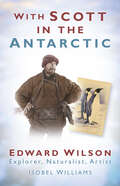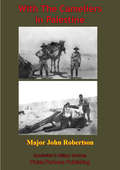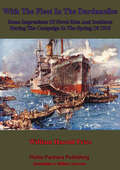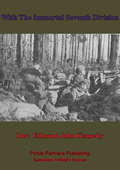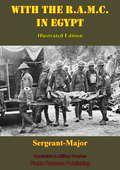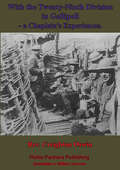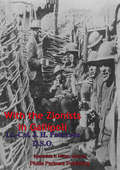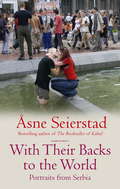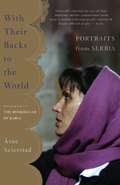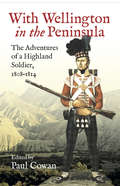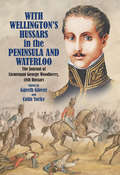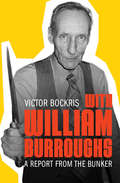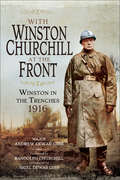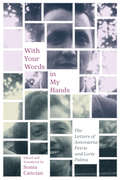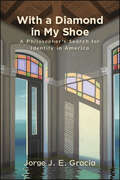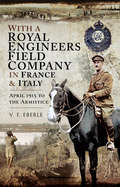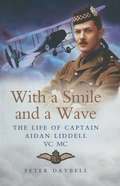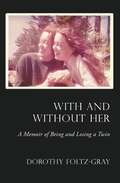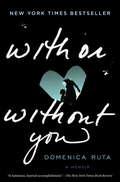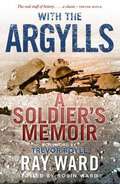- Table View
- List View
With Scott in the Antarctic: Edward Wilson: Explorer, Naturalist, Artist
by Isobel WilliamsEdward Wilson (1872-1912) accompanied Robert Falcon Scott on both his celebrated Antarctic voyages: the Discovery Expedition of 1901-1904 and the Terra Nova Expedition of 1910-1913. Wilson served as Junior Surgeon and Zoologist on Discovery and, on this expedition, with Scott and Ernest Shackleton he set a new Furthest South on 30 December 1902. He was Chief of Scientific Staff on the Terra Nova Expedition and reached the South Pole with Scott, Lawrence Oates, Henry Robertson Bowers and Edgar Evans on 18 January 1912, arriving there four weeks after the Norwegian explorer Roald Amundsen. Wilson and his four companions died on the return journey. Trained as a physician, Wilson was also a skilled artist. His drawings and paintings lavishly illustrated both expeditions. He was the last major exploration artist; technological developments in the field of photography were soon to make cameras practical as a way of recording journeys into the unknown. This biography, the first full account of the Antarctic hero, traces his life from childhood to his tragic death.
With The Cameliers In Palestine
by Major James Robertson"Major Robertson is doing a great service to his old comrades in publishing this History of the New Zealand Companies of the Camel Corps. In New Zealand as in Australia, it is only natural that more interest has been shown in the Western theatre of the Great War than in the Eastern theatres as the great bulk of their soldiers served in the former. The Palestine campaign is consequently little known in these countries. Nevertheless, that campaign has been more used as a "text book" for the examination of officers in the British Army than any other phase of the Great War. In fact it bids fair to take the place of Stonewall Jackson's campaign in the Shenandoah Valley which had been used for this purpose for several generations before the Great War. In spite of the fact that no American troops fought in Palestine, Lord Allenby's campaign is better known in the United States Army, particularly in the cavalry, than it is in Australia and New Zealand whose troops played such an important part in it."Owing to its extreme mobility and suitability for desert warfare, The Imperial Camel Corps Brigade had many and varied roles to fill, all of which were filled with credit to the brigade and its gallant leader. The map of Egypt and the Sinai Peninsula is better known to its members than to any other troops. In Palestine where there is little desert, the particular value of their camels largely disappeared, but the brigade held its own with the cavalry in the fighting round Beersheba, the pursuit up the Philistine Plain, and the raid on Amman. After their transformation to cavalry, as the 14th and 15th Australian Light Horse Regiments and the 2nd New Zealand Machine Gun Squadron, the Australian and New Zealand "Cameliers" well upheld their traditions in the Battle of Megiddo and the advance on, and capture of, Damascus."-Introduction
With The Fleet In The Dardanelles, Some Impressions Of Naval Men And Incidents During The Campaign In The Spring Of 1915
by William Harold. D. Price Sir Everard Fraser K. C. M. G.As warfare ground to a halt in the static, bloody trenches of the Western Front in 1914, the Allied command sought to lever Germany's Turkish allies out of the war. Although the British had but a small standing peacetime army, she possessed the largest fleet in the world, and planned to use the awesome power of her huge naval guns to blast a passage through the Turkish defences of the strait. Constantinople would thereby be threatened and Turkey forced to sue for peace. The plan was bold, ambitious and doomed to fail.As the confident fleet steamed up through the Mediterranean, Padre Price kept a diary of his experiences and anecdotes of the Jolly Tars. However, his notes are filled with danger and bloodshed as the fleet encounter the brave and stubborn shore batteries, taking its baptism of fire. Though gallant and bloodied by the shells of the enemy, the fleet could not force the passage - a fateful failure that would lead to the landings at Gallipoli and further allied failures. Author -- Price, William Harold. D. 1917Preface -- Sir Everard Fraser K.C.M.G. (1859-1922)Text taken, whole and complete, from the edition published in London, A. Melrose, ltd. 1915Original Page Count - xvi and 124 pages.Illustrations -- 6 Illustrations.
With The French Flying Corps [Illustrated Edition]
by Carroll Dana Winslow"Petite bleu to pilote-a young American's flight into warThe author of this book, Dana Winslow, was a young American in Paris as France recruited men to fight the invading German forces of the Kaiser at the outbreak of the First World War. Feeling strongly for the plight and cause of the French, he immediately went to Les Invalides and there enlisted in the French Flying Corps as a trainee pilot. This vital first hand account is an essential source work of the period which reveals the training of the earliest French military aviators of the great conflict on the Western Front and it follows Winslow on his 'rite of passage' from inexperienced civilian, to lowly and little regarded aeronautical student (petit bleu) through his first perilous days in the combat zone to his time as an experienced and much prized pilote in the hostile skies over the trenches of the front lines. As may be expected, Winslow takes us to his war of dogfights, mid-air collisions, artillery spotting and reconnaissance in vivid-if humbly recounted-detail. Winslow's book is especially valuable as an insight into the variety of aircraft employed by the French during his time with them and he provides useful details as to their construction, abilities, applications and flying characteristics such-as those of the peculiar 'cut down' Bleriot that was 'the Penguin.' He also gives an interesting view of the business of military flying in wartime, which he distinguishes as entirely separate from piloting, as he describes it, as a mere 'conductor.' Accounts of battling in the air during the Great War are not common, so this volume is, of course, a welcome addition to their limited number and will be of interest to everyone interested in the subject."--Leonaur Print Version.Author -- Winslow, Carroll Dana.Text taken, whole and complete, from the edition published in New York, C. Scribner's sons, 1917.Original Page Count - xi and 226 pagesIllustration -- 15 illustrations.
With The Immortal Seventh Division
by Right Reverend the Lord Bishop of Winchester Rev Edmund John KennedyEven among the highly-trained and professional soldiers of the B.E.F in 1914 the men of the Seventh division stood apart for their bearing and training, for the contained no reservists; all were full-time soldiers. Accompanying these uncompromising men, was Reverend Kennedy, assigned to the 20th Brigade, which was to see much action during the opening months of the First World War.The Padré and his beloved soldiers trekked into Belgium to take part in the First Battle of Ypres, to find the local inhabitants welcoming but the atmosphere filled with apprehension. As the Seventh finally clashed with the invading Germans the author found his role turned from an observer to participant in offering comfort and even absolution to the wounded and dying. A man of committed faith he continued to minster to his men as they fought in the desperate action around Ypres.After a year with the troops the Reverend returned to England and composed his memoirs of the period but did not survive long enough to see their publication.Author -- Rev. Edmund John Kennedy d. 1915.Preface -- Right Reverend the Lord Bishop of Winchester.Text taken, whole and complete, from the edition published in London, Hodder and Stoughton, 1916.Original Page Count - x and 193 pages
With The R.A.M.C. In Egypt [Illustrated Edition]
by Sergt. MajorA veteran Non-Commissioned Officer tells of his experiences among the shells, wounded and diseases of the Egyptian Campaign of World War One. Includes 32 illustrations."THIS account of the work of the Royal Army Medical Corps in Egypt from the earliest days of the British Occupation in 1883 to the close of the Sinai Desert Campaign at the beginning of 1917, is in no way official, nor must it be regarded as in any sense officially inspired...It is due to the reader, however, to say at once that, though the book must be taken solely as the independent work of one man possessing no official status whatever, it has been produced under privilege, without which, indeed, it could never have been written. For the facts as to the doings of the R.A.M.C. on the battlefield, and in respect of the Corps' many activities in other branches of medical war service, the writer has been able to draw largely on his own experience, it having been his lot to serve as a member of the Royal Army Medical Corps both with the Dardanelles Army and with the Egyptian Expeditionary Force...Very few names are here set down, albeit many fine achievements and instances of singular devotion to duty have been necessarily recorded. Seeing that it was practically impossible to mention by name all in the Service who had won, or deserved to win, distinction, it was thought better to leave names alone altogether, and to let the great sum of heroism, enterprise, exertion, merge itself into the common honour of the Corps."
With The Twenty-Ninth Division In Gallipoli, A Chaplain's Experiences. [Illustrated Edition]
by Rev Creighton Oswin"The padre of the 86th Brigade, 29th Division, gives an account of his experiences at Gallipoli where he landed on 25th April 1915 to his evacuation on medical grounds on 12th August....it covers the period 27th January 1915, when he reported to the HQ of the newly formed 29th Division in Leamington, to 12th August 1915 when he arrived in Alexandria having been evacuated sick (diphtheria) from the Peninsula. The 86th Brigade was a Fusilier Brigade with 2nd Royal Fusiliers, 1st Lancashire Fusiliers, 1st Royal Munster Fusiliers and 1st Royal Dublin Fusiliers, and it was the first to land on 25th April 1915. It was with the first two mentioned that Creighton had most contact and they feature prominently in this account. The other two battalions, being recruited mainly from the south of Ireland, were predominantly RC.Creighton had come straight from civvy street and took a little while to find his feet among regular troops....This account is based on his diary and he took pains to write only what he got firsthand and from personal observation and he has tried to be as accurate as possible.The interesting photos were borrowed from the CO of 2nd RF and his narrative does give a feel for the conditions and fighting on the Peninsula. At one stage he gives vent to his feelings after a fruitless attack by a brigade of the newly arrived 52nd (Lowland) Division which cost over fifty percent casualties: "These things seem to happen every battle. The amount of unnecessary lives simply thrown away is appalling."...The book closes with a chapter by the BM, Major H.M. Farmar, on the landing of the 86th Brigade and the subsequent operations till 3rd May."N&M print versionAuthor -- Rev. Creighton Oswin, 1883-1918Text taken, whole and complete, from the edition published in London, Longmans, Green and co., 1916.Original Page Count - xiv and 191 pages.Illustrations -- 26 maps and Illustrations.
With The Zionists In Gallipoli
by Lt.-Col J. H. Patterson"Rare account by the C.O. of the Judeans - a unit of Jewish Zionists within the British army who helped drive the Ottoman Turks out of Palestine in 1917-18.This is an extraordinary account of one of the most unusual units ever to have fought in the ranks of the British army. 'The Judeans' were a battalion of Jewish soldiers raised during the Great War specifically to serve in Palestine, which, then as now, was a politically and racially sensitive area. Set against the background of the 1917 Balfour Declaration, which pledged British support for establishing a homeland for the Jewish people in Palestine, this is the account of the Judeans by its outspoken (non-Jewish) Commanding Officer, Col. J. H. Patterson, who is palpably proud of having led the Judeans, which he rightly describes as a 'unique unit' whose formation was 'unprecedented in our annals'...Patterson's account of the victorious 1918 campaign that swept the Turks out of what is now Israel, Palestine and Jordan, is shot through both with his pride in his men, when he goes as far as claiming that the campaign 'was actually pivoted on the sons of Israel who were once again fighting the enemy, not far from the spot where their forefathers had crossed the Jordan under Joshua'. Patterson is also - unusually, given the high degree of anti-Semitism then prevalent in Britain's officer class - highly critical of his fellow officers for discriminating against the Judeans, and other Jewish settlers in Palestine. This book is a rare insight into a remarkable episode in Anglo-Jewish history, and should interest anyone wishing to know more of the background to current conflicts in the Middle East. It is illustrated with 22 photographs of officers of the Judeans and Palestinian scenes, including Biblical sites."-N&M Print ed.
With Their Backs To The World: Portraits from Serbia - from the bestselling author of the Bookseller of Kabul
by Asne SeierstadFrom the bestselling author of THE BOOKSELLER OF KABUL comes a remarkable exploration of the lives of ordinary Serbs under the regime of Slobodan Milosevic-during the dramatic events leading up to his fall, and finally in the troubled years that have followed. Asne Seierstad traveled extensively through Serbia between 1999 and 2004, following the lives of people from across the political spectrum. Her moving and perceptive account follows nationalists, Titoists, Yugonostalgics, rock stars, fugitives and poets. Seierstad brings her acclaimed attention to detail to bear on the lives of those whom she encounters in With Their Backs to the World, as she creates a kaleidoscopic portrait of a nation made up of so many different-and often conflicting-hopes, dreams, and points of view.
With Their Backs To The World: Portraits from Serbia - from the bestselling author of the Bookseller of Kabul
by x Asne SeierstadFrom the bestselling author of THE BOOKSELLER OF KABUL comes a remarkable exploration of the lives of ordinary Serbs under the regime of Slobodan Milosevic-during the dramatic events leading up to his fall, and finally in the troubled years that have followed. Asne Seierstad traveled extensively through Serbia between 1999 and 2004, following the lives of people from across the political spectrum. Her moving and perceptive account follows nationalists, Titoists, Yugonostalgics, rock stars, fugitives and poets. Seierstad brings her acclaimed attention to detail to bear on the lives of those whom she encounters in With Their Backs to the World, as she creates a kaleidoscopic portrait of a nation made up of so many different-and often conflicting-hopes, dreams, and points of view.
With Their Backs to the World: Portraits from Serbia
by Asne SeierstadFrom the best-selling author of "The Bookseller of Kabul," an account of thirteen ordinary Serbian people and how their lives changed before, during, and after the fall of Milosevic
With Wellington in the Peninsula: The Adventures of a Highland Soldier, 1808–1814
by Paul CowanFew men from the 71st Highland Light Infantry who sailed from Cork with Wellington to Portugal in 1808 returned to the Irish port six years later. The author of Vicissitudes in the Life of a Scottish Soldier was one of the survivors and claims only four other men from his company came through the entire six years with him. As one of Wellington's elite Light Infantry units the 71st were in the fore of the fighting in some of the hardest fought battles of the Peninsular War. The book was controversial on its release in 1827 for its unvarnished and unsentimental account of the grim war against the French in Spain, the Netherlands, Portugal and France itself. A cynic with a highly developed sense of humour, the author was not afraid to criticise his superiors, be they thieving sergeants or officers who were far from gentlemen. Editor Paul Cowan draws on little known diaries and other accounts written by the author's contemporaries to corroborate and expand on this frank but all too long neglected first-hand picture of the war in the Peninsula as it was really fought.
With Wellington's Hussars in the Peninsula and Waterloo: The Journal of Lieutenant George Woodberry, 18th Hussars
by Gareth GloverGeorge Woodberry was commissioned into the 18th Light Dragoons (Hussars) as a cornet on 16 Jan 1812, and joined Wellingtons army as a lieutenant, seeing action in the key battles of 1813 and 14 Moralles, Vittoria, Nivelle, Nive, Orthes, Croix dOrade and the final battle of the war at Toulouse. He was wounded at Mendionde in a clash with French cavalry as Wellington advanced into France. He also served in the 1815 campaign, being at Waterloo and the march to Paris.What is most remarkable is that Woodberry found time to record events at length in his journal almost every single day. This enables the reader to trace accurately the movements of the 18th Hussars and Wellingtons army in general with precision. It also provides an insight into life on campaign in Spain, France and Belgium with the British Army of the early nineteenth centuryHis lively, detailed and entertaining account of his time in Wellingtons army is matched by the unusual story of the history of his journal. It was published once before, in 1898, but in French by a Paris-based publisher. The original journal, in two leather-bound volumes, has since been lost, but the French edition has now been translated back into English by renowned Napoleonic historian Gareth Glover and is published in the UK for the first time.
With William Burroughs: A Report from the Bunker
by Victor BockrisA trove of intimate conversations between Burroughs and Susan Sontag, Andy Warhol, Patti Smith, David Bowie, and more icons of &’70s New York and beyond. During the 1970s, William Burroughs, author of Junky and Naked Lunch, lived in a loft on the Bowery in New York City&’s Lower East Side. Christened &“The Bunker,&” his apartment became a modern-day literary salon with people like Andy Warhol, Lou Reed, Patti Smith, Susan Sontag, and fellow beat poet Allen Ginsberg passing through for a drink or a joint and the promise of stimulating conversation with the ingenious and eccentric Burroughs. Among Burroughs&’s entourage was author Victor Bockris, whose tape recorder was always running to capture meandering dinner party conversations and electric late-night sessions in the Bunker. In these moments, Bockris captures Burroughs&’s desires, anxieties, and thoughts on writing, photography, punk rock, and more. The recordings and recollections in With William Burroughs create an unprecedentedly multidimensional portrait of a man who is often overshadowed by his reputation.
With Wings: An Anthology of Literature by and about Women with Disabilities
by Florence Howe Marsha SaxtonWith Wings is an anthology of stories, poems, and essays by thirty women writers, all of whom have a disability or physical difference. The volume was compiled with several goals in mind: to combat educational discrimination, both sexist and ableist, against disabled women and girls; to enhance the self-esteem of disabled women and girls by presenting positive role models; to provide a literary forum for the experiences of disabled women of different social classes; and to challenge the literary community to follow suit, recognizing works by disabled women. The book is divided into three thematic parts: Living in These Bodies, These Minds; Seeking Help and Love; and Transcendence. Contributors include Nancy Mairs, Muriel Rukeyser, Alice Walker, Adrienne Rich, and many less well-known writers.
With Winston Churchill at the Front: Winston on the Western Front, 1916
by Andrew Dewar GibbFollowing his resignation from the Government after the disastrous Gallipoli campaign, Winston Churchills political career stalled. Never one to give in, Churchill was determined to continue fighting the enemy.He was already a Major in the Territorial Reserve and he was offered promotion to Lieutenant Colonel and with it command of a battalion on the Western Front. On 5 January 1916, Churchill took up his new post with the 6th (Service) Battalion, Royal Scots Fusiliers. The battalions adjutant was Captain Alexander Dewar Gibb who formed a close relationship with Churchill that lasted far beyond their few weeks together in the war.Dewar Gibb subsequently wrote an account of his and Churchills time together in the trenches. Packed with amusing anecdotes and fascinating detail, Gibbs story shows an entirely different side to Churchills character from the forceful public figure normally presented to the world. Churchill proved to be a caring and compassionate commander and utterly fearless. Despised on his arrival, by the time he departed he was adored by his men.Supplemented with many of Churchills letters, the observations of other officers and additional narrative this is the most unusual and absorbing account of this part of Churchill's life that has ever been told.
With Your Words in My Hands: The Letters of Antonietta Petris and Loris Palma (McGill-Queen's Studies in Ethnic History #2.50)
by Donna R. GabbaciaFollowing Antonietta and Loris's first kiss in the shadows of the Italian Alps barely a year after the end of the Second World War, the couple was divided by a distance far greater than could ever have been imagined. With Antonietta's family moving to Montreal, migration entered the couple's intimate worlds, stretching the distance between them from the two hundred kilometres separating Ampezzo and Venice to the ocean between Montreal and Venice. Throughout their transatlantic separation, the young lovers fervidly wrote each other until they were reunited in Canada in 1949.With Your Words in My Hands tells a story about love and migration as written and read, idealized and imagined, through daily correspondence. Sonia Cancian recovers a rare complete epistolary record of an immigrant experience defined by love and sustained in writing, translating the letters with deftness and an ear for the immediacy of emotion and longing they embody. Cancian gives context to these exchanges dating from the beginning of the largest migration movement from Italy to Canada, showing how love, frustration, fear, sadness, and empathy were palpable elements that inflected the quotidian – bureaucratic processes, employment, family life – and defined immigrant experience.For the countless couples whose love is fragmented by separation but woven together with envelopes and stamps, or onscreen in today's instant messaging, these letters remind us how the experience of distance and proximity, absence and presence, can be reconfigured within the world of intimate correspondence.
With a Diamond in My Shoe: A Philosopher's Search for Identity in America (SUNY series in Latin American and Iberian Thought and Culture)
by Jorge J. GraciaIn 1961, at the age of nineteen, Jorge J. E. Gracia escaped from the island of Cuba by passing himself off as a Catholic seminarian. He arrived in the United States with just a few spare belongings and his mother's diamond ring secured in a hole in one of his shoes. With a Diamond in My Shoe tells the story of Gracia's quest for identity—from his early years in Cuba and as a refugee in Miami to his formative role in institutionalizing the field of Latin American philosophy in the US academy. Committed to integrating into Anglo America without forgetting his roots, Gracia reflects on his struggles and successes as an immigrant and academic, bringing a philosopher's eye to bear on his personal and professional development as a leading Latinx scholar.
With a Royal Engineers Field Company in France & Italy: April 1915 to the Armistice
by V.F. EberleA memoir of the First World War from the rare perspective of an engineer.VF Eberle MC joined up upon the outbreak of the war in No 2 Field Company Royal Engineers, 48th (South Midland) Division, the same company as his brother, who was a captain. He was commissioned before sailing for France at the end of March 1915 and remained with it for the rest of the war. In that time he saw action on the Somme and in the Advance to the Hindenburg Line before his Division took part for most of the Battle of Third Ypres (Passchendaele). Transferred to Italy at the end of 1917, he took part in the final stages of the war, including the Battle of Asiago. Besides his eloquent description of the work of a field company RE, he spends some time in outlining his role in the development of the Bangalore Torpedo.Based on his wartime letters, diaries, and records—which can now be consulted in the Imperial War Museum—this book gives a detailed picture of the employment of a field company in war, during both periods of both relative tranquility and major offensives. There are relatively few memoirs of Royal Engineers’ officers, especially of those in his position, so close to the line. The memoirs benefit from his key eye for observation and his skillful use of the material available to him, making this a fine addition to the literature of the Great War.
With a Royal Engineers Field Company in France & Italy: April 1915 to the Armistice
by V.F. EberleA memoir of the First World War from the rare perspective of an engineer.VF Eberle MC joined up upon the outbreak of the war in No 2 Field Company Royal Engineers, 48th (South Midland) Division, the same company as his brother, who was a captain. He was commissioned before sailing for France at the end of March 1915 and remained with it for the rest of the war. In that time he saw action on the Somme and in the Advance to the Hindenburg Line before his Division took part for most of the Battle of Third Ypres (Passchendaele). Transferred to Italy at the end of 1917, he took part in the final stages of the war, including the Battle of Asiago. Besides his eloquent description of the work of a field company RE, he spends some time in outlining his role in the development of the Bangalore Torpedo.Based on his wartime letters, diaries, and records—which can now be consulted in the Imperial War Museum—this book gives a detailed picture of the employment of a field company in war, during both periods of both relative tranquility and major offensives. There are relatively few memoirs of Royal Engineers’ officers, especially of those in his position, so close to the line. The memoirs benefit from his key eye for observation and his skillful use of the material available to him, making this a fine addition to the literature of the Great War.
With a Smile and a Wave: The Life of Captain Aidan Liddell VC MC
by Peter DaybellDuring the late summer of 1915 Captain Aidan Liddell's gallant exploits filled many newspaper columns and he was feted as a national hero. Already decorated for bravery while serving with the Argyll and Sutherland Highlanders, he transferred to the Royal Flying Corps, and it was as a pilot that he attracted national acclaim.Badly wounded over enemy occupied Belgium, Liddell lost consciousness as his two-seater RE5 aircraft was raked by machine gun fire, and plunged out of control towards the ground. Despite terrible injuries and the extensive damage to his machine, he somehow recovered from an inverted dive and flew on for a further half an hour to the safety of the Allied lines, so saving his observer and a valuable aircraft.For this action he was awarded the Victoria Cross, but did not live to receive Britain's highest gallantry award and succumbed to his wounds a month later. With a Smile and a Wave provides a vivid picture of the squalor and danger of war, the backbreaking hardship of trench life and of the challenges of pioneer air fighting. It draws extensively on Captain Liddell's own letters and diaries and exposes the character and courage of the man in his own often compelling and moving words. But it is a story not just of war, but of growing up in a devout and prosperous family, of a Jesuit education at Stonyhurst College, and of Edwardian Oxford before the Great War. It portrays the privileged lifestyle of the English country gentleman, and describes how a very close knit and patriotic family dealt with the adversity of war.
With and Without Her
by Dorothy Foltz-GrayThis is a story that, when told directly, shuts people up, the kind of story that drives people to change the subject, or cross the street when they see the teller coming. In 1949, author Dorothy Foltz-Gray and her identical twin sister, Deane, were born. In 1981, Deane, then a psychologist, was fatally shot by one of her patients. In the years between, the pair formed an almost supernaturally close bond, one so intimate that at times, their memories fused and their individual identities dimmed.Here, Foltz-Gray, an award-winning poet and journalist, recounts not only the extraordinary phenomenon of growing up in a world that could not distinguish her from another human being, but also the struggle to survive the loss of her twin. Foltz-Gray describes the imagined womb life she and her sister shared, their childhood and family, and their dreams of sharing each other's lives. She also details the nightmare of her sister's death, its immediate aftermath, and her attempts to recover her self.With and Without Her is the story of what happens when a life divides into before and after. It is a story of identity and individuation, confusion and competition, intimacy and separation, violence and murder. Most of all, it is the story we all face, of loss and survival.
With or Without You: A Memoir
by Domenica RutaA haunting, unforgettable mother-daughter story for a new generation--the debut of a blazing new lyrical voice Domenica Ruta grew up in a working-class, unforgiving town north of Boston, in a trash-filled house on a dead-end road surrounded by a river and a salt marsh. Her mother, Kathi, a notorious local figure, was a drug addict and sometimes dealer whose life swung between welfare and riches, and whose highbrow taste was at odds with her hardscrabble life. And yet she managed, despite the chaos she created, to instill in her daughter a love of stories. Kathi frequently kept Domenica home from school to watch such classics as the Godfather movies and everything by Martin Scorsese and Woody Allen, telling her, "This is more important. I promise. You'll thank me later." And despite the fact that there was not a book to be found in her household, Domenica developed a love of reading, which helped her believe that she could transcend this life of undying grudges, self-inflicted misfortune, and the crooked moral code that Kathi and her cohorts lived by. With or Without You is the story of Domenica Ruta's unconventional coming of age--a darkly hilarious chronicle of a misfit '90s youth and the necessary and painful act of breaking away, and of overcoming her own addictions and demons in the process. In a brilliant stylistic feat, Ruta has written a powerful, inspiring, compulsively readable, and finally redemptive story about loving and leaving.
With the Argylls: A Soldier's Memoir
by Ray WardAn unforgettable memoir of fighting with the renowned Scottish infantry regiment during World War II. &“The real stuff of history . . . a classic.&” —Trevor Royle, author of Facing the Bear When Ray Ward died in 1999, his sons discovered an old and dusty manuscript in an Afrika Korps ammunition box in the cellar of the family home in Glasgow. These papers contained a collection of their father&’s memoirs, which detailed his experiences as an infantry officer during the Second World War, when he served in the 1st Battalion of the Argyll and Sutherland Highlanders. His memoirs give vivid accounts of Ray Ward&’s time in Eritrea, Abyssinia, Egypt, the Western Desert, Sicily and mainland Italy, and bring to life individual episodes of bravery, adventure and danger that characterized the North African and Italian Campaign.
